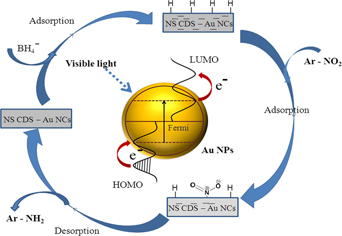Crossref Citations
This article has been cited by the following publications. This list is generated based on data provided by
Crossref.
Fu, Yukui
Zeng, Guangming
Lai, Cui
Huang, Danlian
Qin, Lei
Yi, Huan
Liu, Xigui
Zhang, Mingming
Li, Bisheng
Liu, Shiyu
Li, Ling
Li, Minfang
Wang, Wenjun
Zhang, Yujin
and
Pi, Zhoujie
2020.
Hybrid architectures based on noble metals and carbon-based dots nanomaterials: A review of recent progress in synthesis and applications.
Chemical Engineering Journal,
Vol. 399,
Issue. ,
p.
125743.
Zhao, Ziming
Guo, Yanzhu
Zhang, Tao
Ma, Jiliang
Li, Haiming
Zhou, Jinghui
Wang, Zhiwei
and
Sun, Runcang
2020.
Preparation of carbon dots from waste cellulose diacetate as a sensor for tetracycline detection and fluorescence ink.
International Journal of Biological Macromolecules,
Vol. 164,
Issue. ,
p.
4289.
Tantubay, Sangeeta
Kalita, Himani
and
Pathak, Amita
2021.
Sensitive detection of auric and sulphide ions using hybrid silver/nitrogen-doped carbon nanoparticles.
Sensors and Actuators B: Chemical,
Vol. 330,
Issue. ,
p.
129276.
Dejpasand, Mohamad Taghi
Saievar-Iranizad, Esmaiel
Bayat, Amir
and
Ardekani, Saeed Rahemi
2021.
Surface plasmon-induced photodegradation of methylene blue with single layer graphene quantum dots/Au nanospheres under visible-light irradiation.
Journal of Alloys and Compounds,
Vol. 885,
Issue. ,
p.
160904.
Huang, Zheao
Zhou, Jianqing
Zhao, Yingying
Cheng, Hengbin
Lu, Gongxuan
Morawski, A. W.
and
Yu, Ying
2021.
Stable core–shell ZIF-8@ZIF-67 MOFs photocatalyst for highly efficient degradation of organic pollutant and hydrogen evolution.
Journal of Materials Research,
Vol. 36,
Issue. 3,
p.
602.
Zhao, Jun
Wang, Hanhan
Geng, Hongqi
Yang, Qi
Tong, Yuping
and
He, Weiwei
2021.
Au/N-Doped Carbon Dot Nanozymes as Light-Controlled Anti- and Pro-Oxidants.
ACS Applied Nano Materials,
Vol. 4,
Issue. 7,
p.
7253.
Karak, Niranjan
2021.
Sustainable Epoxy Thermosets and Nanocomposites.
Vol. 1385,
Issue. ,
p.
201.
Bayda, Samer
Amadio, Emanuele
Cailotto, Simone
Frión-Herrera, Yahima
Perosa, Alvise
and
Rizzolio, Flavio
2021.
Carbon dots for cancer nanomedicine: a bright future.
Nanoscale Advances,
Vol. 3,
Issue. 18,
p.
5183.
Shubhashish, Shubhashish
Karasik, Sarah J.
Posada, Luisa F.
Amin, Alireza S.
Achola, Laura A.
Nisly, Nathaniel
Willis, William S.
and
Suib, Steven L.
2022.
Syntheses of gold supported on metal oxides and their application in organic transformations.
Microporous and Mesoporous Materials,
Vol. 336,
Issue. ,
p.
111888.
Ali Farzin, Mohammad
Abdoos, Hassan
and
Saber, Reza
2022.
Graphite nanocrystals coated paper-based electrode for detection of SARS-Cov-2 gene using DNA-functionalized Au@carbon dot core–shell nanoparticles.
Microchemical Journal,
Vol. 179,
Issue. ,
p.
107585.
Xu, Qingqing
Cai, Huawei
Li, Wenjing
Wu, Min
Wu, Yongzhong
and
Gong, Xiao
2022.
Carbon dot/inorganic nanomaterial composites.
Journal of Materials Chemistry A,
Vol. 10,
Issue. 28,
p.
14709.
Luo, Jie
Zhang, Chaojie
Yao, Chong
Ma, Dandan
Chen, Yixin
Tian, Min
Xie, Haoxuan
Pan, Limei
Zhen, Yaoyao
Chen, Ruihao
Wu, Jiwei
Lu, Chunshan
Feng, Feng
Xu, Xiaoliang
Wang, Qingtao
Zhang, Qunfeng
and
Li, Xiaonian
2023.
Sulfur-doped activated carbon supported platinum species as robust catalysts for nitrobenzene hydrogenation to p-Aminophenol.
Molecular Catalysis,
Vol. 545,
Issue. ,
p.
113216.
Li, Xing
Li, Bingcheng
Zhang, Qunfeng
and
Li, Xiaonian
2023.
Preparation of carbon dots-metal nanoparticles nanocomposites and their application in heterogeneous catalysis.
Nano Futures,
Vol. 7,
Issue. 4,
p.
042001.
Wang, Huiyong
Shi, Bowen
Yu, Hongmei
Yang, Shu
Nie, Guochao
Wang, Shaoyan
and
Chen, Wei
2023.
Visible light-excited full-color phosphorescent material realized by carbon dots dispersed in polyacrylamide and applied to anti-counterfeiting.
Materials Today Advances,
Vol. 20,
Issue. ,
p.
100429.
Giasari, Afifah Salma
Pratama, Rifky Adhia
Eddy, Diana Rakhmawaty
Irkham
Adzani, Muchammad Dhuhri
Fransisca, Natasha
Pratomo, Uji
Gultom, Noto Susanto
Indriyati
and
Primadona, Indah
2024.
Role of Sulfur in Enhancing UV‐Light Absorption and Photoelectrochemical Performance of ZnO/N,S‐doped CQDs Nanocomposite.
ChemistrySelect,
Vol. 9,
Issue. 42,
Jorge, Herculys Bernardo
Della-Rocca, Daniela Gier
Herrera, Elisa
Rodríguez-Castellón, Enrique
Gil, Antonio
de Amorim, Suélen Maria
Winiarski, João Paulo
da Cruz Vieira, Iolanda
Moreira, Regina de Fatima Peralta Muniz
Algarra, Manuel
and
Peralta, Rosely Aparecida
2024.
A Sustainable Approach for the Valorization of Lignocellulosic Biomass in Active Photo- and Electrocatalyst Carbon Dots.
Waste and Biomass Valorization,
Vol. 15,
Issue. 12,
p.
6707.
Nayak, Ripsa Rani
Khairun S., Hafila
Parveen, Gazala
Garg, Ayesha
Chumachenko, Yulia A.
Shu, Riyang
and
Gupta, Navneet Kumar
2025.
A Review on Biomass‐Derived Carbon Quantum Dots: Emerging Catalysts for Hydrogenation Catalysis.
Chemistry – An Asian Journal,
Vol. 20,
Issue. 6,
Hezarkhani, Zeinab
and
Ghadari, Rahim
2025.
Influence of Plasmonic Au@Cl/N Co‐doped Carbon Dots on the Performance of Dye‐Sensitized Solar Cells.
Applied Organometallic Chemistry,
Vol. 39,
Issue. 2,



